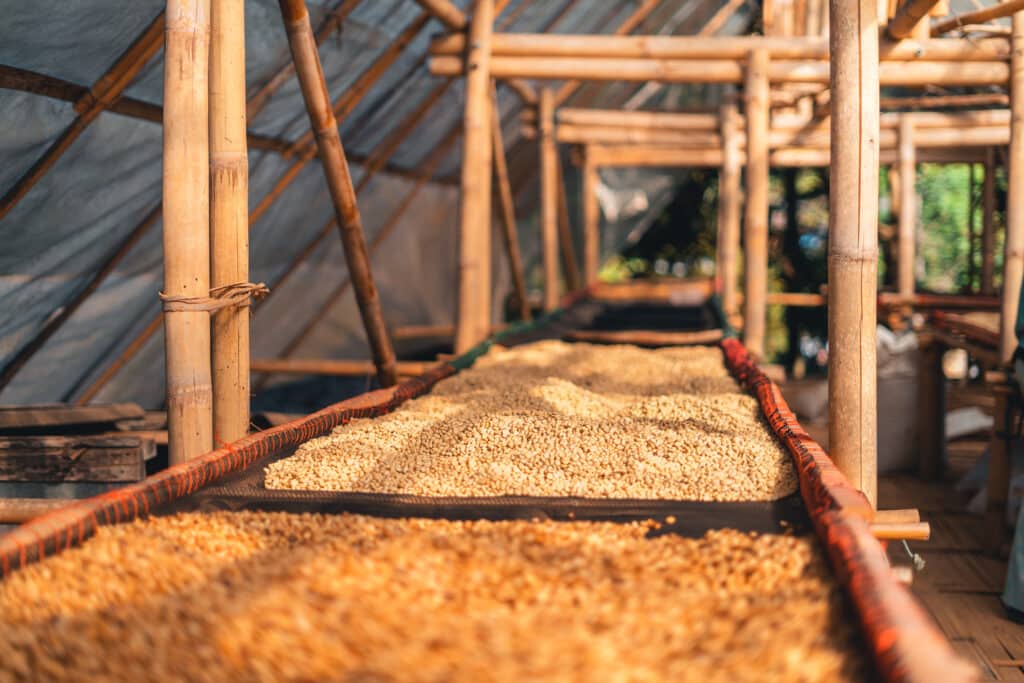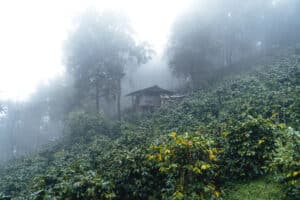Coffee is primarily grown in countries near the equator, in a region known as the “coffee belt” or “bean belt.” This region includes countries in Central and South America, Africa, and Asia.
Some of the major coffee-producing countries include Brazil, Colombia, Ethiopia, Vietnam, and Indonesia. Other countries that produce coffee on a smaller scale include Kenya, Guatemala, Costa Rica, Honduras, and many others.
The type of coffee that is grown in each region can vary based on the climate, altitude, and other environmental factors. For example, Arabica coffee is often grown at higher altitudes and in cooler climates, while Robusta coffee is typically grown in lower altitude regions with a warmer climate.
Before coffee beans can be roasted and brewed, it has to go through a longer process, which starts with the farmer extracting the coffee bean from the cherries. Here’s a brief overview of the process:
Harvesting: Coffee cherries are typically harvested from the coffee trees by hand, using a selective picking method. The cherries are usually picked when they are ripe, which is when they turn a deep red color. Some farmers harvest their coffee fields all at once, when some of the cherries are still green or yellow, which can cause loss of flavor in the final product.
Farmers who focus on quality are harvesting at least 3 times on the same trees, to get the largest amount of ripe berries, and minimize the number of overripe and unripe berries.
Processing: There are two primary methods for processing coffee cherries: the dry method and the wet method. Between the two methods there are furthermore another process called ”The honey process”. The process is considered to be a middle ground between the washed and natural.


The different methods have the purpose of extracting the bean from the cherries , which consist of several layers: outer skin, mucilage, parchment skin, silver skin and, finally, the two beans.
Dry Method or natural : In the dry method, the cherries are spread out in the sun to dry, which can take several weeks. This method is the oldest and most traditional way of processing coffee and is still used in many parts of the world, including Ethiopia, Brazil, and Yemen. Once the cherries are dry, they are hulled to remove the outer layers and reveal the coffee beans inside.
Wet Method: In the wet method, the cherries are pulped to remove the outer layer, leaving a layer of mucilage around the coffee beans. The beans are then fermented to break down the mucilage, washed, and dried.
The honey process, pulped natural or semi washed coffee is a type of coffee processing method that is gaining popularity among coffee enthusiasts. In the honey process, the outer skin of the coffee cherry is removed, leaving the sticky, mucilage layer intact. The coffee beans are then dried with varying degrees of this mucilage still attached to them. The amount of mucilage left on the beans during drying determines the level of honey process (sweetness and fruitiness). The beans can be classified as yellow, red, or black honey, with each level indicating the degree of mucilage left on the beans. Honey process coffee can be a little more expensive than other processing methods due to the extra labor and care required during processing
After the coffee beans have dried down to a moisture content of 11-12%, the coffee beans normally get packed in jute. A Jute is a type of bag made from jute material that is used for transporting and storing coffee beans. Jute is a natural fiber that is known for its strength and durability, making it an ideal material for bags that need to withstand the weight and pressure of coffee beans.
Coffee jute bags are typically used by coffee farmers and distributors to transport their coffee beans from the farm to the roasting facility or to the market. These bags are designed to keep the coffee beans fresh and free from moisture, which can damage the quality of the beans.